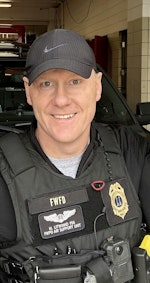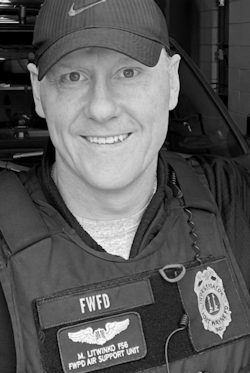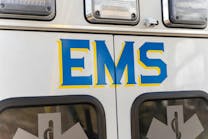Active-threat incidents, such as an active shooter and bombing, create dangerous environments that push responders beyond the “everyday” or routine calls for service. These environments present unique challenges for emergency care providers that require enhanced situational awareness, strategic decision-making skills and specialized medical care.
To achieve rapid response and appropriate patient care during an active threat, many agencies implemented Rescue Task Force (RTF) teams. They also adopted the medical care guidelines of Tactical Emergency Casualty Care (TECC), which was developed explicitly for trauma management in austere environments. TECC provides a structured framework, prioritizing immediate lifesaving interventions that are based on the casualties’ most urgent needs.
However, once responders remove victims from the warm zone, emergency care providers must transition their mind and skill set from only immediate lifesaving interventions to the more comprehensive treatments and detailed assessments that typically are found in traditional EMS protocols. This transition of patients to the cold zone, or secured environment, is a critical phase in the continued prehospital trauma care of victims of an active-threat incident.
Bridging the gap
The transition to the cold zone presents challenges that are based on the differences in treatment priorities and equipment availability. EMS practitioners must coordinate their efforts to ensure a smooth and seamless shift from tactical to traditional.
Whether tactical or traditional, it comes down to “the right care at the right time.” The guidelines of TECC focus on stopping life-threatening bleeding, airway management, hypothermia prevention and immediate evacuation of the injured to secured areas. However, the prolonged survival of victims depends on cold zone medical providers performing in-depth assessments, administering medications and managing complex conditions. It’s in the secured environment where providers dig into their medical “toolbox,” working under traditional EMS protocols.
With the complement of advanced medical equipment, providers can reassess all previous interventions that were performed in the warm zone, utilize advanced airway management techniques, provide pain management, achieve hemodynamic stabilization and complete comprehensive secondary assessments.
Although TECC guidelines provide initial lifesaving care in the warm zone, traditional EMS protocols are critical for bridging the gap between evacuation and transport. EMS practitioners’ ability to utilize their full skill set and advanced equipment ensures that victims receive the best possible prehospital trauma care.
Teamwork
The mission of an active-threat response is twofold: stop the killing and stop the dying. After-action reports from incidents demonstrate that providing immediate lifesaving care in the warm zone significantly improves survival rates. However, the sooner that a patient is evacuated to a more secure environment for detailed assessments, advanced airway management, fluid resuscitation and pain control, the better the outcome. Rapid transition from initial stabilization to definitive medical care reduces complications and increases the likelihood of survival, highlighting the critical need for an integrated response that prioritizes immediate interventions and timely evacuation.
For these reasons, public safety agencies must train together, implementing joint agency response policies to get to victims safely and efficiently. Once there, responders must create a seamless, lifesaving continuum of care from point-of-wounding care to structured patient handoffs. This ensures patients arrive at trauma centers in the best possible condition.
In these high-stakes situations, it takes teamwork to ensure that the transition from tactical to traditional equals survival.

Mark Litwinko
Capt. Mark Litwinko is a 20-year veteran of the Fort Wayne, IN, Fire Department (FWFD) and serves as an investigator and commissioned law enforcement officer for the arson/fire investigations division. He also serves as a tactical medic with the Fort Wayne Police Department (FWPD) Emergency Services Team. In 2013, Litwinko oversaw the design, implementation and training of the FWFD/FWPD Rescue Task Force program in response to high-threat/active-assailant incidents. At the National Association of EMTs, he serves on the Tactical Emergency Casualty Care authoring committee and the Pre-Hospital Trauma Committee. Litwinko is the owner/instructor of Axis Emergency Readiness Solutions, which specializes in training and education on active-threat awareness, situational awareness, de-escalation, basic trauma management, stop-the-bleed, hazmat awareness and unified responses to active-threat incidents.






